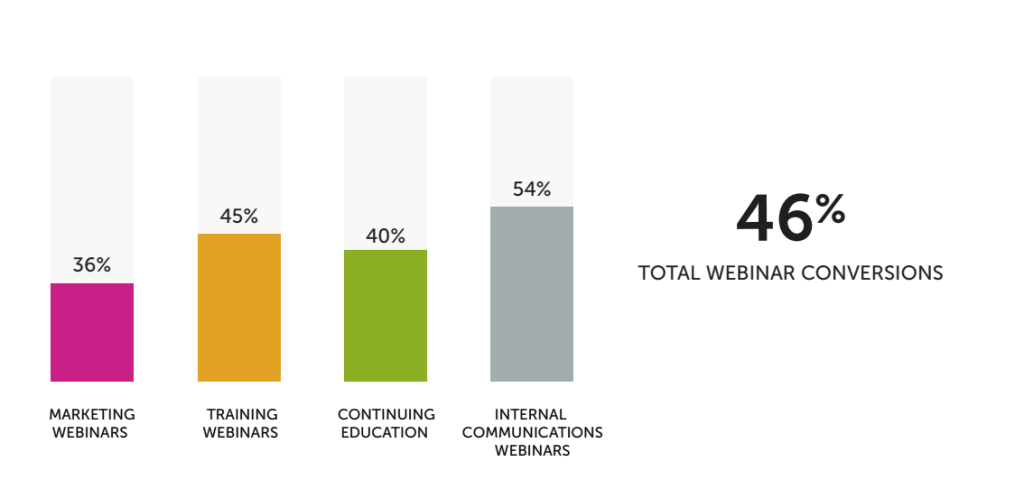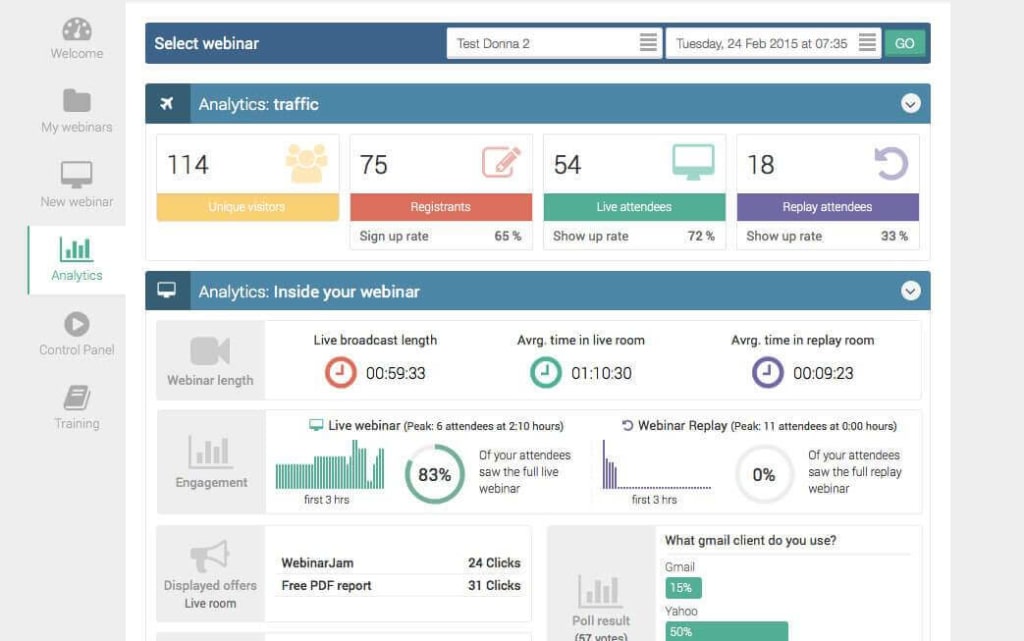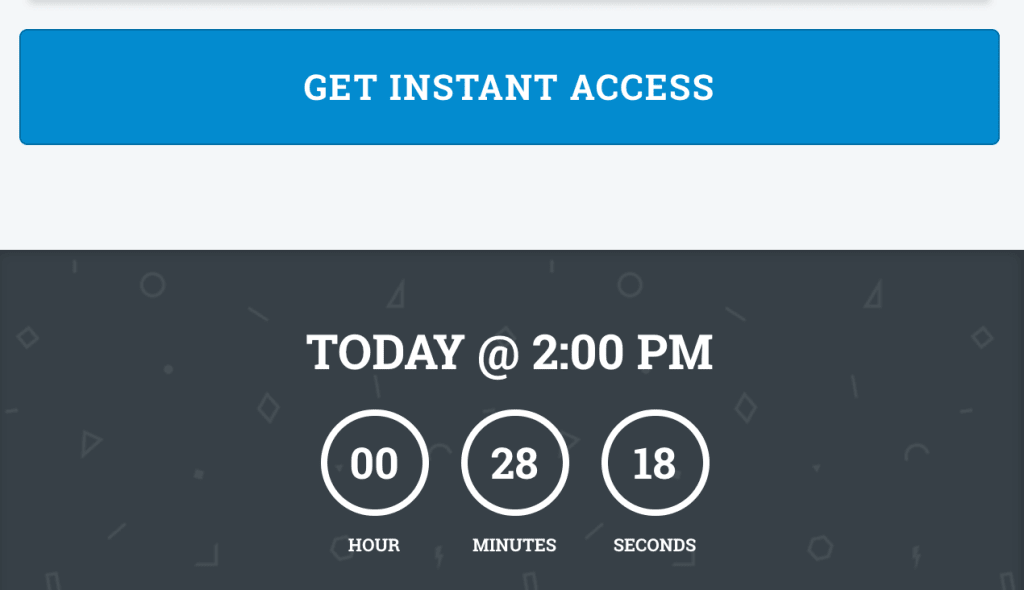According to the latest Webinar Benchmarks Report from ON24, the average webinar attendance rate is 46%. This is pretty consistent with the results from previous studies and the 40-50% target is generally accepted across the board.
So we were a little disappointed by the fact that only 20% of people who signed up for our webinar were attending it this time 18 months ago.
In our defence, marketing webinars tend to perform below the wider average – at 36%, according to the latest study from ON24. However, this still left us considerably below the industry average and we’re used to targeting results well above the average expectations.
ON24 2017 Webinar Benchmarks Report
So we decided it was time to change our approach to managing webinar leads – and the results were pretty spectacular. In less than 12 months we managed to boost our webinar attendance rate from 20.56% to an incredible 75.62%. And here’s how we did it.
First, the tool we used
A lot of the credit for our success has to go to Everwebinar, an automation tool that completely transformed the way we deliver webinars to our audiences. This wasn’t the only secret to our impressive results but everything started with one key automation feature Everwebinar brings to the table.
Prior to using Everwebinar, we were scheduling our webinar to screen three times a week. Looking back at things now, we were doing pretty well considering the lack of flexibility we offered users – at least compared to what we’re able to do now.
Check this out.
Just-in-Time Webinars boosted attendance by 100%
The magic for us happened when we switched from three weekly plays to something called Just-In-Time Webinars. This feature allows people who sign up to your webinar to watch it almost instantly, creating an on-demand environment for attending your webinars.
Previously, people were signing up to our webinar but then had to wait until the next screening, which gives them all kinds of opportunities to lose interest, forget or find something more important to do.
Just-in-Time Webinars mean users get to watch your webinar when they’re most hungry for them: the moment they actually sign up to watch it. And the results speak for themselves. This one feature boosted our attendance rate by more than 100%, from 20.56% to 42.46%.
Then we incentivised people to attend
Okay, so Just-In-Time Webinars allow you to provide on-demand viewing for your users, so they can watch the moment they sign up. However, we decided to take a slightly different route and scheduled ours to play every 30 minutes, meaning there’s always a webinar about to start when people visit our sign up page.
Why did we do this?
The short answer is that we wanted to incentivise people to “get instant access”.
By placing a timer below our CTA button we found more users clicked – a classic case of incentivising users with the fear of missing out. However, this wasn’t the only reason we scheduled out webinars this way.
We also found people like a small amount of time to prepare webinars. When you sign up to watch a webinar, you expect to have to pay attention and take notes – at least if there’s anything worth taking away from it. So, aside from incentivising people to sign up, our 30-minute scheduling gave people time to their head in gear, make a brew and grab some paper and a pen – all of which increased attendance rates.
We didn’t end it here, though. We also optimised our pre-webinar email sequence by giving people a free workbook to use during the webinar. Not only did this further increase our attendance rates but we also saw more viewers watching the entire webinar as a result. And that’s not all.
Just-In-Time Webinars also boosted replay watches
By switching to Just-In-Time Webinars and optimising our sign-up process to increase incentive, we saw a massive increase in engagement. People weren’t just attending our webinar in larger numbers, they were watching it in full and even coming back to watch it again.
Another 33% of people watched a replay bringing our overall attendance to over 70%. So we decided to add an exit-intent pop-up prompting users to watch again, for those who might otherwise leave without considering it. This led to another 4% increase in attendance for us, bringing us to a final total of 75.62%.
Amazing results in less than a year
In just under 12 months our overall webinar attendance went from 39.46% to 75.62%. That’s an impressive climb by anyone’s standards and way above the industry average, which we should all be aiming for really. Of course, Everwebinar’s Just-In-Time Webinars feature played a huge role in our success, which only goes to show the power of automation when it comes to using webinars as a lead generation tool.
We didn’t simply rely on Everwebinar, though. Many brands fall into the trap of setting their tools and leaving them to take care of the rest for them. This is fine, if saving the most amount of time possible is your goal, but we managed to secure another 35% of attendees by increasing incentive and refining our process for handling leads after they clicked to view.
The big lesson in all of this is that underperforming campaigns can be turned around, if you find the right way to deliver them. We already knew the content in our webinar and the lead generation strategy around it were more than good enough. People were signing up and those who attended were moving closer to doing business with us. The underperformance was somewhere in between signing up and physically attending the next webinar. This is where we focused our optimisation campaign, removing every potential barrier we could identify – and the turnaround was a huge success.







